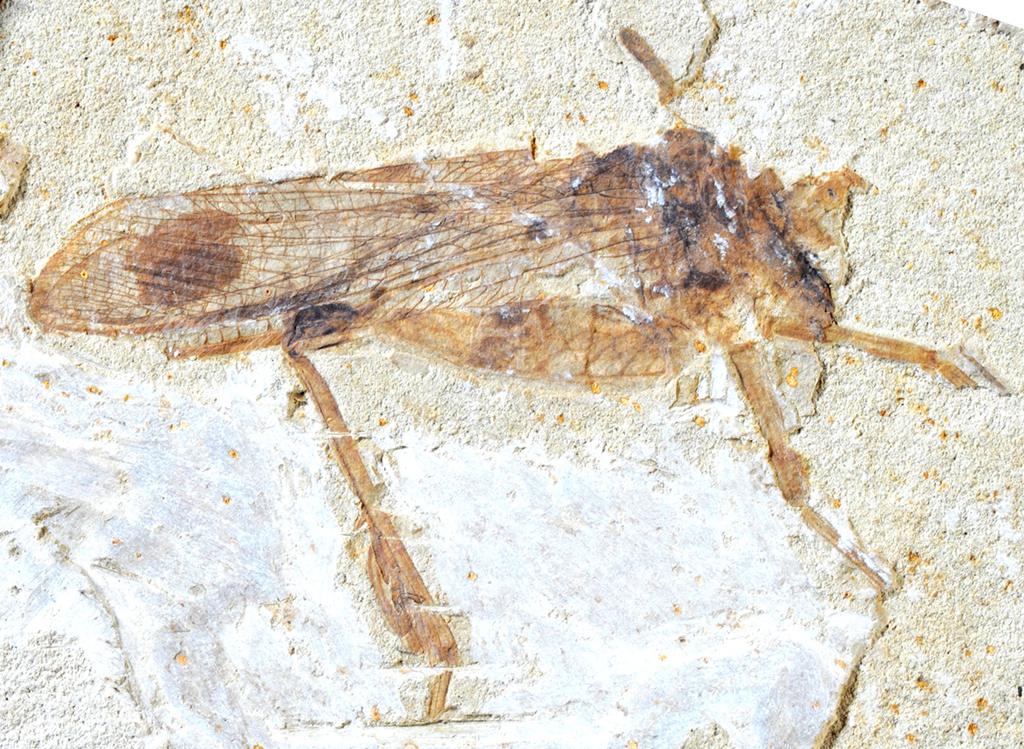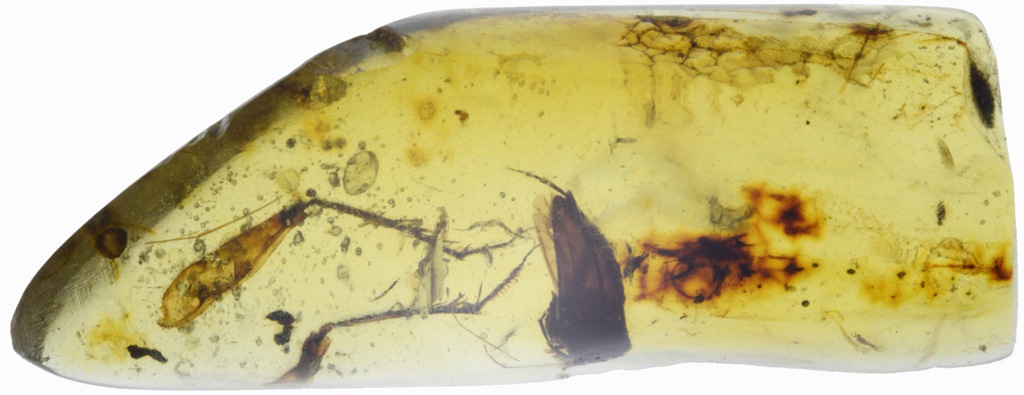The extinct superfamily Elcanoidea (Orthoptera) comprises two families, Permelcanidae and Elcanidae. Elcanidae differ from other Orthoptera in their large and flattened spurs on the dorsal surface of the hind tibia possibly an aid to jumping on soft substrates. To date, this family comprises about 24 species in 12 genera. They have been reported from several Jurassic and Cretaceous deposits in Eurasia and Brazil. Although many orthopteran fossils have been reported from the famous Early Cretaceous Jehol biota, no Elcanidae were reported previously from this Lagerstatte.
Recently, Professor ZHANG Haichun from Nanjing Institute of Geology and Palaeontology, Chinese Academy of Sciences and his team described a new species, Panorpidium yixianensis Fang et al., 2014, from the Lower Cretaceous Yixian Formation of China. It can be assigned to the genus Panorpidium Westwood, 1854, which includes about 5 species from the Lower Cretaceous of southern England and Transbaikal Russia. In addition, a new specimen Burmelcana sp., is described and figured based on an amber inclusion from the mid-Cretaceous Burmese (Myanmar) amber. P. yixianensis sp. nov. represents the first definite record of Elcanidae in the Early Cretaceous Jehol biota, and Panorpidium is the only genus of Ensifera to be found in the Early Cretaceous faunas of England, Russia and China. These specimens therefore provide new information on the distribution of the family and on the disparity of spinal characters on the hind tibiae.
This research was supported by Chinese Academy of Sciences, National Basic Research Program and the National Natural Science Foundation of China.
The paper was published in Cretaceous Research (Fang Yan, Wang Bo, Zhang Haichun, Wang He, Jarzembowski E.A., Zheng Daran, Zhang Qi, Li Sha, Liu Qin. 2014. New Cretaceous Elcanidae from China and Myanmar (Insecta, Orthoptera). DOI: 10.1016/j.cretres.2014.05.004)

Figure 1:Elcanidae from Jehol Biota

Figure 2:Elcanidae from Burmese amber
Download:
